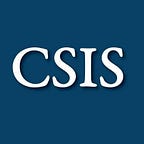Uncertainty Is Everywhere, Predictably
January 10, 2018
A tsunami of agreement is rising from the ocean of 2018 predictions. This will be the year of uncertainty. It’s swirling in elections, innovations, and markets. It’s already washing across the streets of Iran, the Korean peninsula, and 1600 Pennsylvania Avenue.
“A lot of probably very crazy things will happen in 2018,” one commentator wrote recently, capturing the consensus. “Technology has unleashed a cascade of forces that have made the world more volatile.”
“A paralysis which we do not seem to be able to diagnose has overtaken our machine civilization,” declared another. “Today the future seems far more uncertain than it did twelve months ago.”
But look again, and you’ll notice that second piece was published over 85 years ago. After the fireworks and champagne have fizzled, struggling with uncertainty is a New Year’s tradition. How is this year different?
There’s no question that anxiety about the world is widespread. Eight in 10 Americans believe that 2018 will be a “troubled year with much international discord,” according to a recent Gallup poll. They are almost evenly split about whether it will be a year of economic prosperity.
But viewing our age as exceptionally uncertain overlooks modern advantages. Take last week’s “bomb cyclone” that froze the U.S. East Coast. For most of history, people believed the weather was purely chaotic, or driven by the gods. Now we carry local forecasts in our pockets, along with updates about events around the world.
University of Chicago economist Frank Knight was one of the first to distinguish between risk and uncertainty. Risk applies to situations where the odds can be approximated, he explained. Uncertainty describes situations in which odds cannot be assessed.
We haven’t erased uncertainty, but we have become better at transforming it into risk. Although too many disparities in access remain, insurance is now available for nearly every aspect of life: health, employment, property, identity, marriage, vacations, and even kidnapping and ransom.
Agreements between states have also helped reduce uncertainty. Trade deals, for example, add predictability by setting common rules. That’s why proposals to give the North American Free Trade Agreement (NAFTA) and other agreements “sunset clauses” that require renewal are raising concerns among international businesses, which tailor their strategies to cope with uncertainty.
All these advantages are easy to forget because we’re hardwired to worry about uncertainty. The past always feels more predictable in hindsight, and there are incentives for exaggerating change in the present. The scales of evolution are tilted toward identifying and avoiding danger to survive.
That might explain why information is a double-edged sword, often reducing uncertainty in one area and revealing it elsewhere. Every day, we’re exposed to as much information as our fifteenth-century ancestors were during an entire lifetime. But as anyone who has been through a battery of medical tests knows, new data and methods can also produce new anomalies and new anxieties.
When overused, the concept of uncertainty becomes a crutch. During the last 21 years, U.S. Federal Reserve board members have mentioned uncertainty in over 1,500 public speeches. As Kristin Forbes, an external member of the Bank of England’s Monetary Policy Committee, once put it , “Uncertainty is the modern equivalent of a ‘whipping boy’ for economics.”
Recent experience highlights the difficulty in gauging uncertainty and its implications. The world was awash in uncertainty following Brexit and Donald Trump’s election in November 2016. “An age of uncertainty is upon us,” The Economist announced. Public-sector investors flocked to gold , traditionally a safe haven, pushing their reserves to a level not seen since 1999. In January 2017, an index that monitors newspapers around the world recorded its highest level of economic policy uncertainty in 20 years of coverage.
Then something strange happened. While a political maelstrom consumed Washington, U.S. markets proceeded merrily along. A volatility index maintained by the Chicago Board Options Exchange, often called Wall Street’s “fear gauge,” dipped to record lows. The Dow Jones, Nasdaq, and S&P 500 indexes soared to new heights. Uncertainty in one realm doesn’t always spill into another.
As this uncertain year begins, it’s worth keeping three things in mind. First, uncertainty isn’t new and, compared to the broader sweep of history, has actually declined in some respects. Second, we’re primed to worry about sources of uncertainty, so don’t forget to look for stabilizing forces as well. And finally, uncertainty doesn’t guarantee tragedy. Good outcomes can emerge from the unknown.
Jonathan Hillman is a fellow with the Simon Chair in Political Economy at the Center for Strategic and International Studies in Washington, D.C. Follow him on Twitter @HillmanJE.
Commentary is produced by the Center for Strategic and International Studies (CSIS), a private, tax-exempt institution focusing on international public policy issues. Its research is nonpartisan and nonproprietary. CSIS does not take specific policy positions. Accordingly, all views, positions, and conclusions expressed in this publication should be understood to be solely those of the author(s).
© 2018 by the Center for Strategic and International Studies. All rights reserved.
Originally published at www.csis.org.
